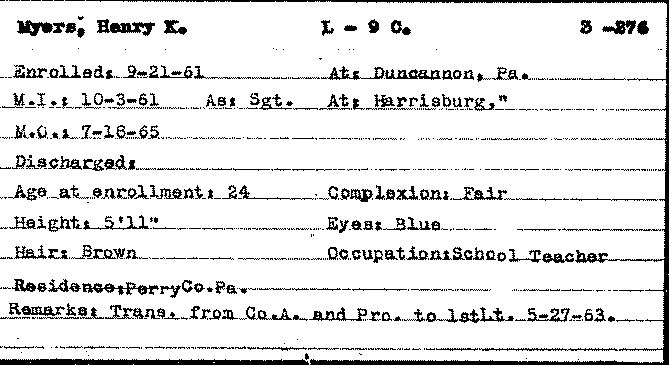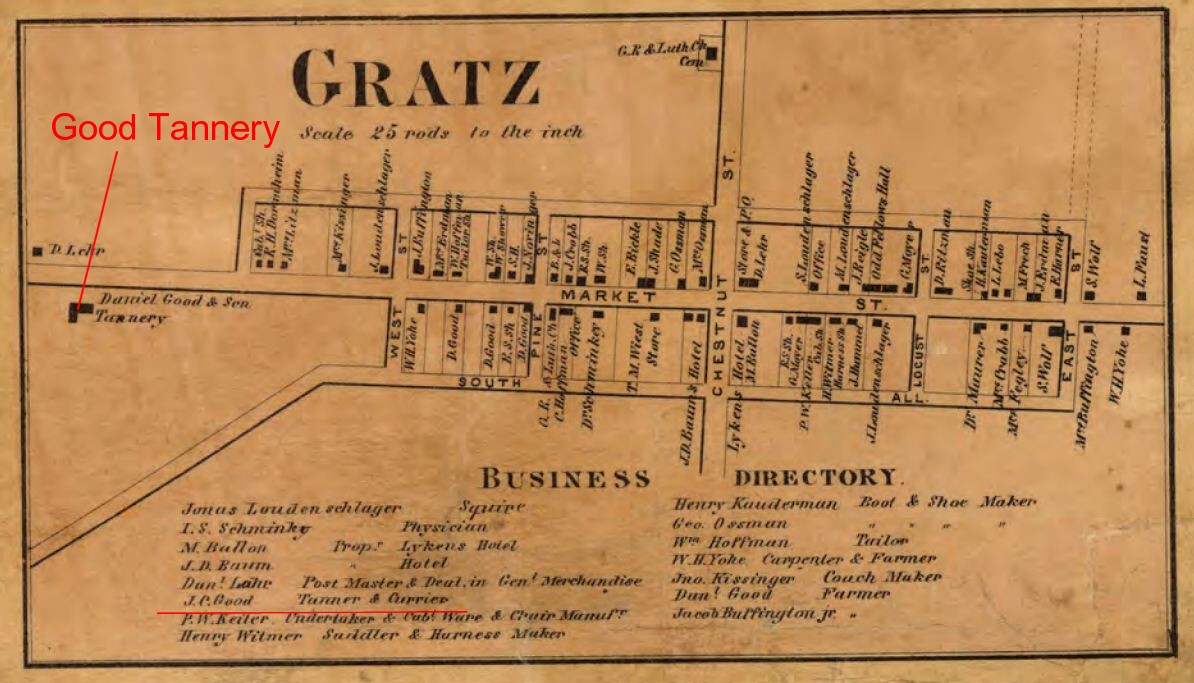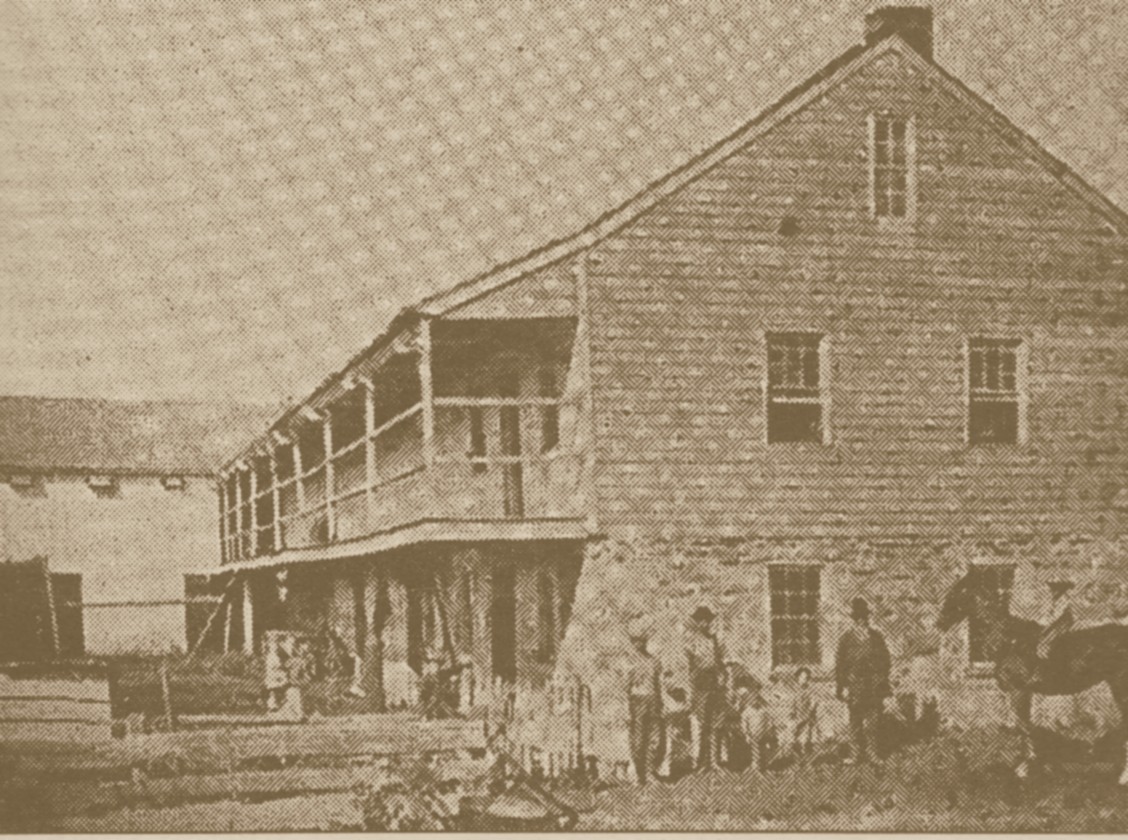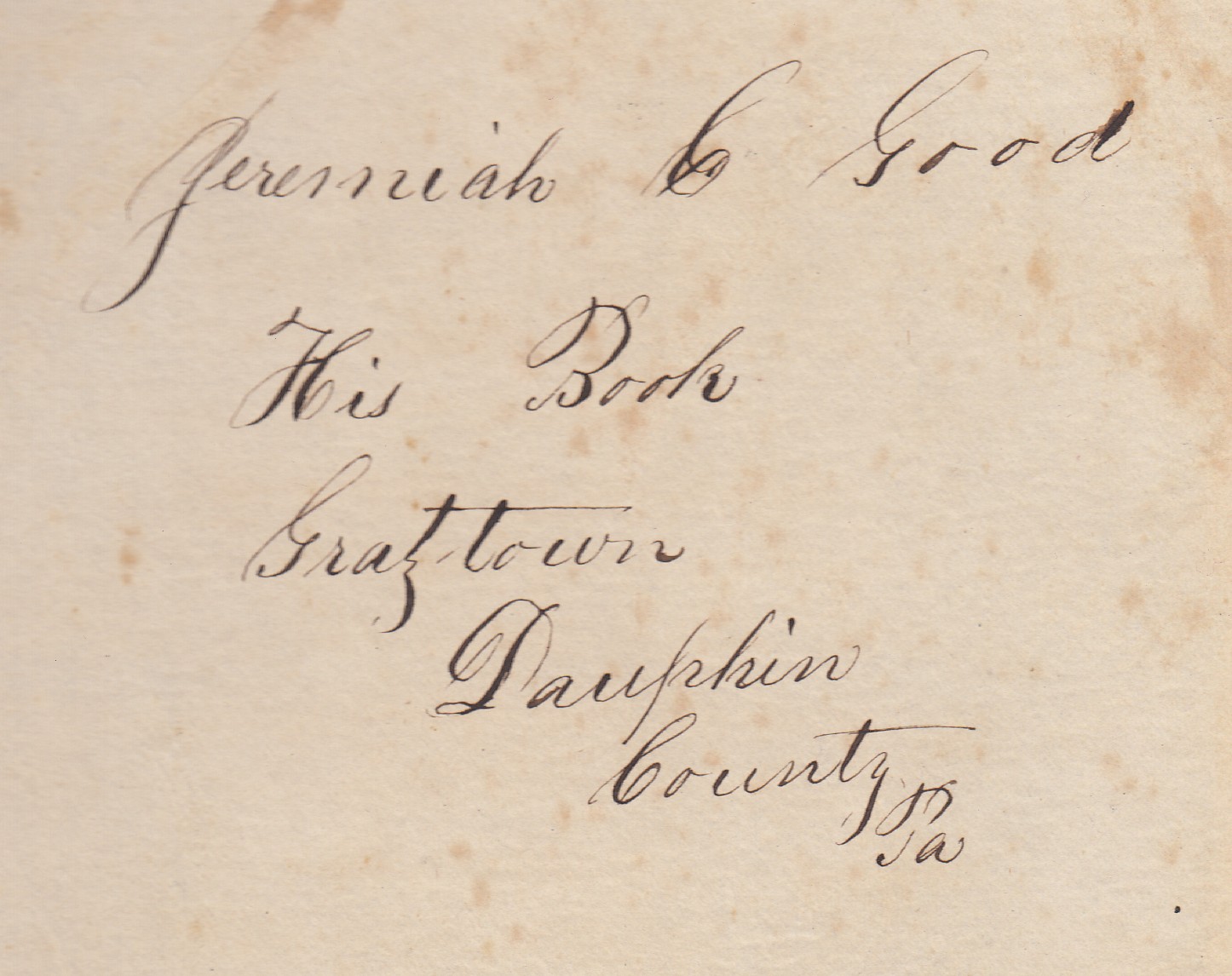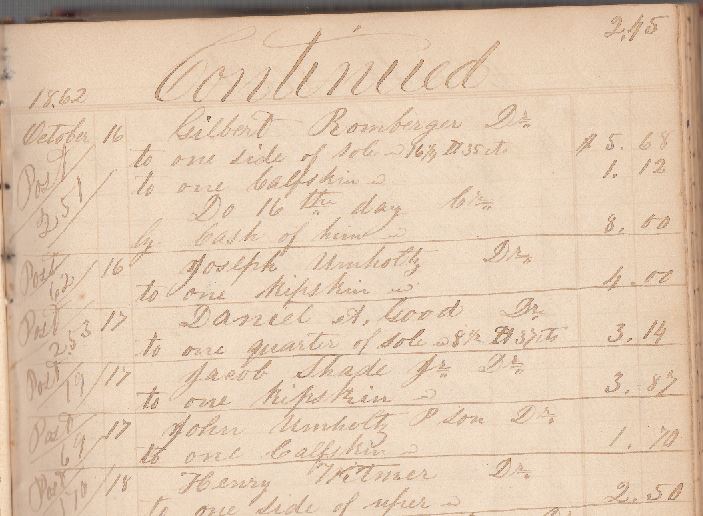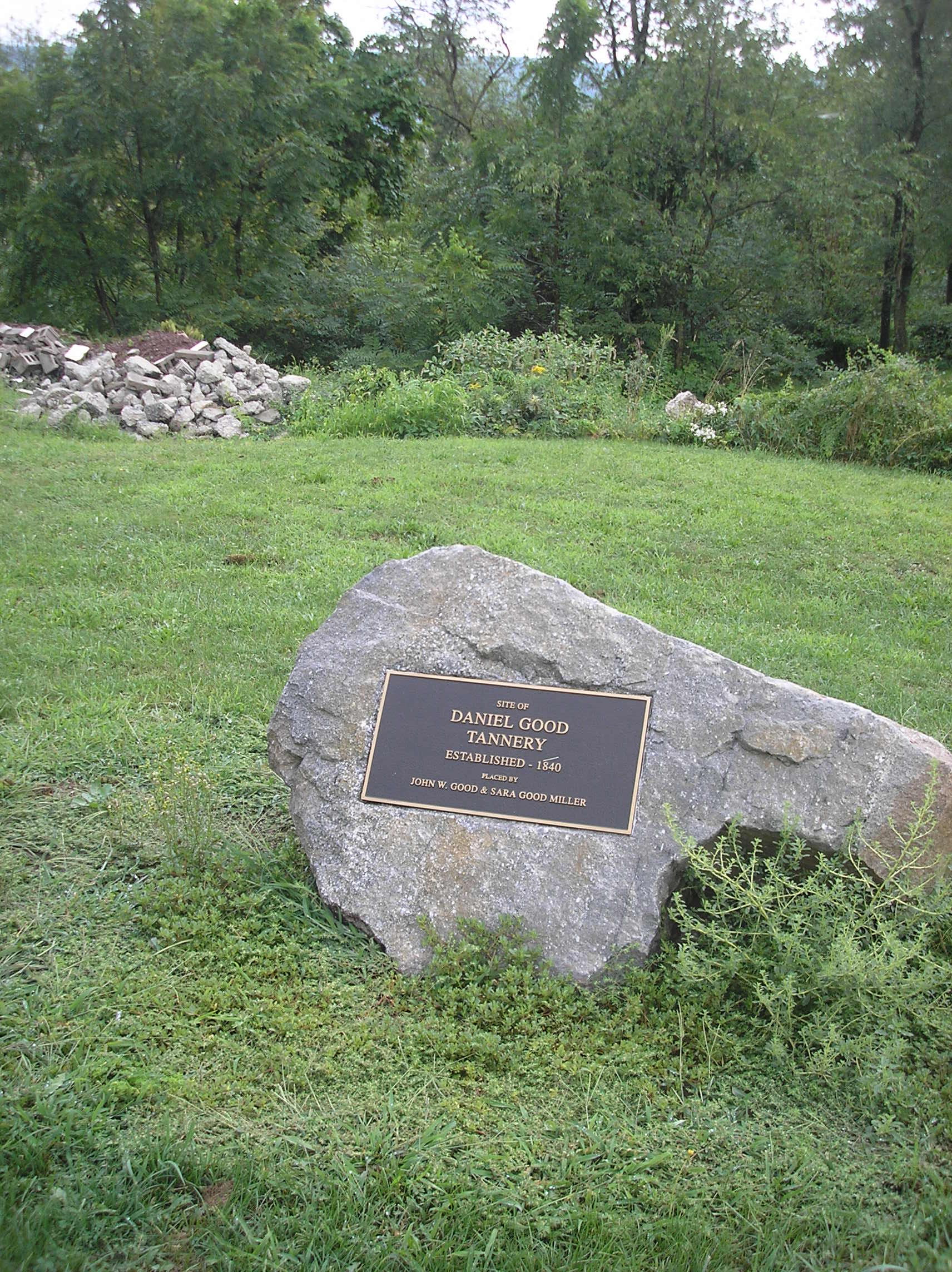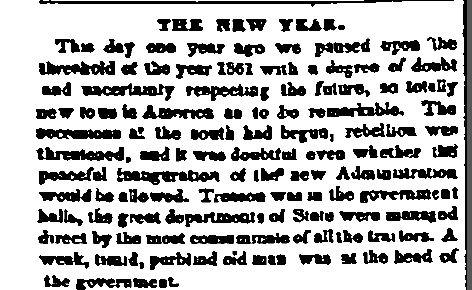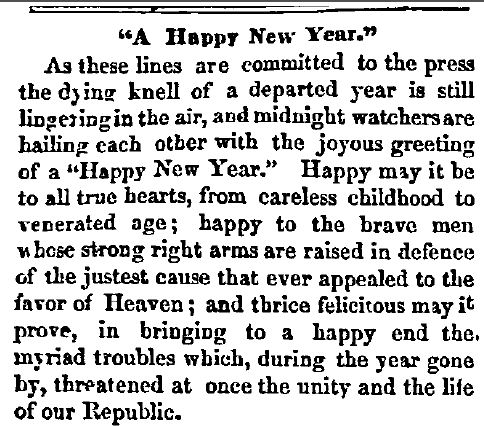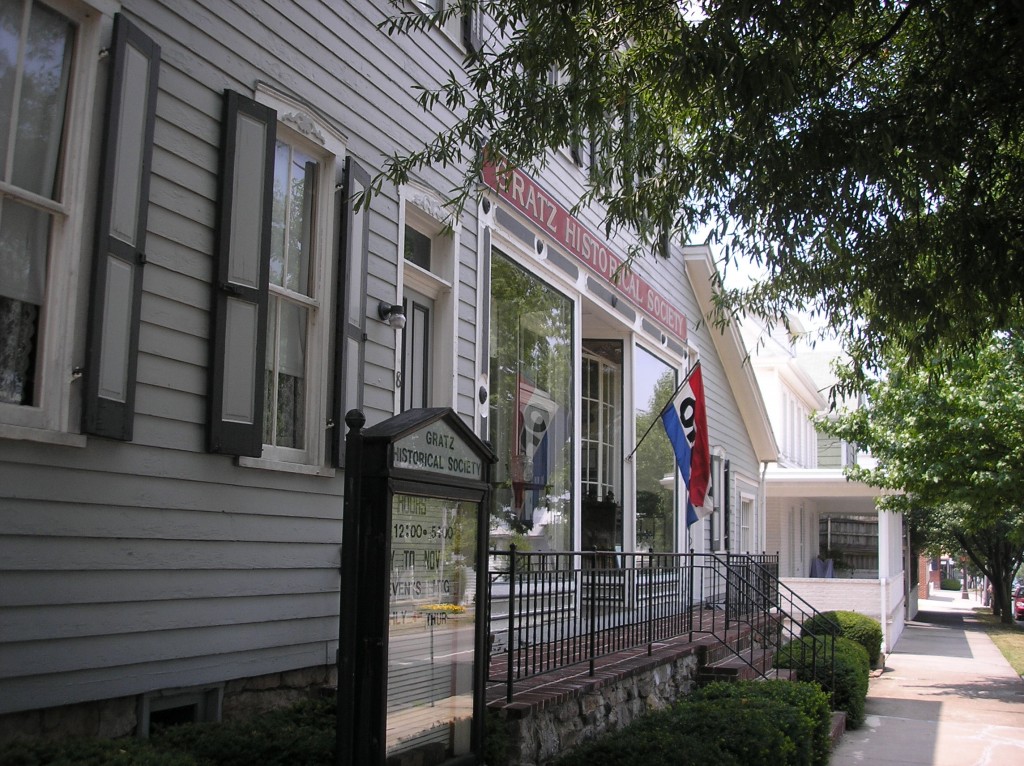Posted By Norman Gasbarro on December 30, 2011
Today is the final post of the “Best of 2011” series and will feature a revised version of the Lykens G.A.R. Civil War Monument post of 10 December 2010. The revisions that appear below are the result of careful research by Sally Reiner, who is a member of the newly formed Lykens-Wiconisco Historical Society and the “names” list that is presented here contains all the corrections she has suggested. The original list that was posted here did not present the names exactly as they appeared on the monument. In some cases the names were difficult to read as a result of dirt that had collected on the plaque or wear that had taken place over time. In other cases there were errors in transcription. Finally, the original posted list contained “spelled out” versions of names that were abbreviated on the plaque – or middle initials were added when in fact no middle initials appeared on the plaque. The list presented with this re-post contains the names exactly as they appear on the plaque – with the exception being that the names are in the format of first name followed by last name rather than last name followed by a comma and then the first name – the latter being the way they appear on the plaque.
Sally Reiner can be contacted directly via e-mail for any comments regarding the G.A.R. Monument as well as any questions about the Lykens-Wiconisco Historical Society. Starting in the spring, this new historical society will have the Lykens G.A.R. Building as its meeting place, headquarters, and museum. The building has been the subject of several prior posts here on this blog.
As always, comments can be added to this post.
—————————–
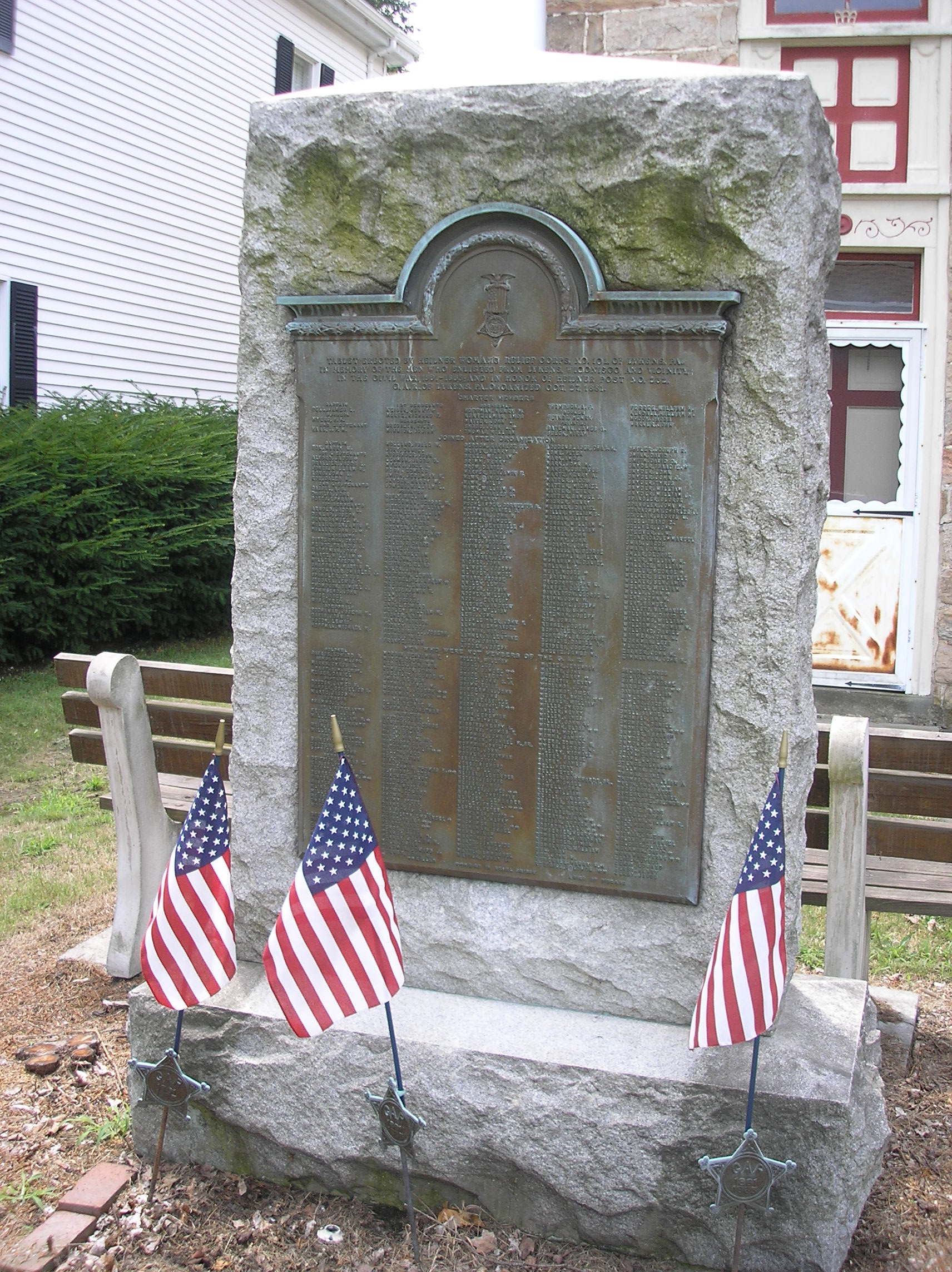
A monument was erected in the Borough of Lykens to honor the veterans from the Lykens and Wiconisco area who fought in the Civil War. This monument is located on North Second Street in Lykens. Traveling into Lykens from either direction on Route 209, turn north at Market Street and proceed to North Second Street. Turn right on North Second Street and the monument is located on the right. It stands in front of the old G.A.R. Building.
The date that this monument was erected is not clear, but had to be after 1881 when the Grand Army of the Republic (G.A.R.), Heilner Post No. 232 was formed, because men are listed who joined after it was formed and men are listed who never joined.
The monument’s inscription reads:
Tablet erected by Heilner Woman’s Relief Corps, No. 101 of Lykens, Pennsylvania, in memory of the Men who enlisted from Lykens, Wiconisco, and vicinity in the Civil War, 1861-1865, and in honor of Heilner Post No. 232 G.A.R. of Lykens, Pennsylvania, organized October 27, 1881.
The monument it unusual in that it attempts to name every known person who served in the war from the area – those who were founding members of the G.A.R. Post, those who joined the G.A.R. Post later, and those who were never members. There are about 400 names listed. It is not known how the list was compiled. And, whether it accomplished the goal remains to be seen.
The geographic area represented is also not exactly clear. Does it include all of Wiconisco Township? At one time part of Wiconisco Township extended to the north side of Short Mountain. Are any veterans named on the monument who lived outside the geographic area, but who belonged to the Heilner Post? Are names omitted if a veteran lived in the geographic area but belonged to another G.A.R. Post? From a previous item posted here, we learned that there were many G.A.R. Posts throughout the Lykens Valley area.
The list of names is organized into three sections: (1) Charter members. (2) Joined After Organization. (3) Men Who Were Not Members. Within each of the sections, veterans are grouped by rank, highest rank fist, and within each rank they are grouped alphabetically. A set of symbols is used to note those were wounded, killed, died in rebel prisons, or died of disease. The names are in very small print on the bronze tablet and some of the names are difficult to read – due perhaps to wear, dirt or corrosion.
The names on the monument represent the largest group of Civil War veterans who were individually named on any Civil War monument in the area. This is also the only known Civil War monument in the area that was specifically created by a women’s group
About 80% of the names on the plaque are easy to identify. They represent individuals who were active in the community, lived for a long period after the war, had unusual names, are buried in area cemeteries, etc. Resources are readily available to identify the regiment and company in which they served. About 20% are difficult, perhaps because they have very common names, moved in or out of the community, died without out making any mark beyond their Civil War service, did not wish to be identified, etc. All of the names have now been included in the list of about 2000 Civil War veterans who have been identified thus far who are from the greater Lykens Valley area. One of the objectives of this Civil War Research Project is to find out as much information about these veterans as possible. Anyone who has information on any veteran named on this monument is urged to contribute to the project!
In reproducing a list of the names that appear on the monument, one “*” will be used to denote those who were wounded. Two “**” will be used to denote those who were killed. Three “***” will be used to denote those who died in rebel prisons. Finally, “^” will be used to denote those who died of disease. These are approximately the same symbols that are used on the monument.

CHARTER MEMBERS
Captain – James L. Pell
Surgeon – H. K. Myers
2nd Lieutenant – J. R. M. Haas
1st Sergeants – Henry Keiser*; Richard F. Martz
Sergeants – Riley Bressler; Josiah Minnick
Corporals – Henry M. Hoffman; Amos Kuntzelman; John L. Matter; John L. Shaud*; William Thomas; A. F. Thompson
Bugler – Henry Feindt
Privates – James G. Bateman; Hiram Bueck; William H. Ferree; William H. Kendall; Jacob McCoy; John Warner
JOINED AFTER ORGANIZATION
Captain – Harry W. Fox
1st Lieutenant – Jacob Alvord; Jacob L. Brallier; William H. Jones; John L. Long; Caleb H. Roe
2nd Lieutenant – A. B. Cassel; John DeSilva; Ephraim Potts
1st Sergeants – Jacob E. Arnold; Joseph Dunlap; Samuel M. Fenn; Benjamin F. Miller; John C. Miller*
Sergeants – Cyrus Bitterman; Francis J. Feindt; John Kauffman; William Martz*; Joseph B. Miller; Martin P. Shaffner; Charles J. Shoemaker; Cyrus S. Spangler; Lewis D. Steckel; Samuel J. Thompson; John Townsend; Abel Wise; Fred N. Wise
Corporals – Joseph M. Buchanan; John C. Davis; Lewis Goudy; Michael M. Hoffman; Isaac W. Holland; Daniel Jury; John Kissinger; Jacob B. Lehman; Joel B. Myers; Edward Pugh; Jeremiah H. Smith; Harry W. Snyder; William L. Sowers
Privates – William Baily; George W. Bitterman; William Bitterman; William Boeckler; William H. Bogar; Jacob Bowman; Louis F. Breyer; Henry Buffington; John Chester*; Richard Coles; John Crane; William Davis; Isaac DeFrehn; Elias Deitrich; John Dolen; Louis Doutrich; Abram Dreibelbies*; Enoch Dressel; Benjamin F. Eby; Jacob Elm; George Ely; Edward Engel; William M. Fegley; Adam Fisher; Patrick Flynn; Jacob Forney; Joseph Fotheringill; Jonas Foust; Uriah Frantz; Earnest Gerdom Sr.; Henry S. Graver; William Grell; Henry R. Grimm; Daniel Grow; Benjamin F. Harper; Daniel Hawk; Philip Hawk; William H. Hawk; Charles E. Heck; Henry Helt; Cornelius A. Hochlander; Daniel C. Hoffman; John P. Hoffman; Samuel Hoover; Beneville Hoyer*; William Hughes; James Hunter; George Irving; William Irving; Daniel Israel; Jerry Kerchner; John Kicher; Joseph Klinger; Samuel Klinger; George Knarr; Lewis Kniley; Josiah Kocher; William Kocher; Earnest Koons; Andrew Kreiner; William Lamey; John Lebo; John F. Lechleitner; Emmanuel Lehman; Nat C. Lehman; Valentine Lenker; Josiah Lohr; Joseph Louden; Chas. H. Loudenslager; Peter Lowe; Amos Mark; John H. Mark; Gustavus Martin; Henry A. Martz; Jacob Matter; Michael Matter; Peter Matter; Samuel S. Matter; Henry Maurer; Daniel Messner; William S. Miller; Alvin Morgan; William H. Morgan; William Morris; John Mucher; John Murphy; John McCarty; George McClellan; Alex McLaughlin; Daniel McManaman; L. F. Nolen; Moses Nutt*; John O’Brien; John W. Orndorff; Caleb Parfet; George A. Pinkerton; John H. Primm; Joseph Reinoehl; B. W. Ritzman; Joseph Ritzman; Jonas Row; Joseph Russel; Oscar Schindler; George Schreffler; Daniel A. Schultz; Joseph Seiders; James M. Sheetz; Joseph R. Shuler; David Smink; David C. Smith; Isaac E. Snyder*; John Snyder; John J. Snyder; Tyrus Snyder; William Snyder; William J. Snyder; George Spangler; John H. Spangler; Charles J. Starnowski; George W. St. Clair; Isaac D. Steel; John Steever; J. W. Steever; Emmanuel Stoneroad; Jacob Swab; Jonas Swab; George Uhler; William H. Uhler; William Wallace; George Waller*; Beneville Welker; Benjamin Welker; William Welker; John Wells*; John H. Wert; Samuel Wert; Nathaniel Willets; David T. Williams; William Williams; Thomas M. Williams; Daniel Williard; John W. Witmer; Levi Workman; Fred Yencth (error on plaque – should be Yentch); John H. Zarker; John H. Zimmerman.
MEN WHO WERE NOT MEMBERS
Colonel – Edward G. Savage
Sergeant Major – Cyrus G. Marks
Regimental Sergeant – Daniel Keiser
Captains – James N. Douden; Cornelius A. Harper; Jacob H. Martz
Surgeon – I. R. Shammo
1st Lieutenants – William Keiser; William P. Miller*
2nd Lieutenants – George W. Hain; Edward Miller
1st Sergeants – Robert Bainbridge; Frank Douden; John Potticher
Sergeants – Thomas E. Deitrich; Sylvester Erb; Francis S. Feindt; James M. Ferree; Isaac Finton; Samuel S, Harper; Philip Kline; Samuel Miller; Obed J. Reigel; Ben Umberger; Thomas J. Woodside
Corporals – Aaron Bressler; John Davis; James W. Elliot; Rush B. Foster; John Kerstetter^; Harry S. Matter; Benjamin F. Morgan; Edwin Moyer**; Benjamin Ressler; John Romberger; George W. Sheesley; Reuben Smith; James M. Witman; Joseph Workman**; Joshua Workman**; George W. Clark; Jonathan Hoffman
Privates – David Alvord; George Armstrong; Edward Baily; Guy E. Baily; Hiram Baily Sr.; Daniel Batdorff; Philip Batdorff**; Fred Bellon; John Bellon; John Bird; Thomas H. Bitterman; Peter Blystone; Henry Bordner; Jacob Bordner; Moses Botts; Edward Brown; Isaiah Brown; Steve Crumy; Isaac Darker; Thomas L. Davis; Emmanuel Dougherty*; Frank Duane**; Israel Feidt**; Jacob Ferree; Uriah D. Ferree; William H. Ferree; Josiah Folk; Edward J. Fordman; John W. Forney; William Fuller; Levi Gable; Samuel Goudy**; Albert L. Grace; John C. Gratz ^; Elias Grimm; John Gunderman; John Haley; Beneville Hand; Philip Harman**; James Hart; Jeremiah Hawk; Nathan Herb; Henry A. Higgins; Thomas F. Higgins; John H. Hoffman; Michael M. Hoffman Sr.; Philip Hoffman; John Hoover; Jonathan Hoover; David Israel; Richard Jones; William Keen; Alexander Keiser; George Keiser; Jonas Keiser; James Kercher**; Christian Kissley; Alexander Klinger; Fred L. Kniley***; Peter Lehman; David Machamer*; Henry Machamer; Isaac Machamer**; Israel Machamer; Hiram Mann; Pat Martin; Cornelius Martz; Edward Martz; Emmanuel Matter; Henry C. Matter; Jeremiah Matter; John Matter; Jerry McCoy*; Henry McCurtin; John McDermot; Owen McDermot; Philip Messner**; William Messner; Cyrus Miller; Henry Miller; James Miller; John Miller; Elias Minnick**; Mort Mumma; Samuel Mumma; Edward F. Myers; George W. Myers; Michael O’Leary; George Parfet; James Parfet; Henry Pell; Peter Pell; Barnhardt Plotzer Sr.; Michael Polm; John Powell; William Reed; Jonas P. Reigle; Andrew Ressler; Henry Ressler; John Rettinger; John Roberts **; Andrew Robison**; Peter Robison**; Henry Romberger**; Jonathan Romberger; Simon Romberger; William Romberger; Adam Row; John M. Row; Harry H. Rubendall*; Solomon Rudisill**; Cyrus Salada; John Salada; Geroge Samuels; McCoy Sarbut**; William Savage; David Sayor; Jacob Saylor; Fred Schindler; Samuel Shell; Amos Shomper; Daniel Shomper; John Shomper***; Abraham Snyder; Israel Snyder; James Snyder; Gutleip Sperl; Daniel Stahl; Abraham Steude; John Tillman; James Thomas; William Thompson^; Frank Treon**; Aaron Updegrave; Daniel Updegrave; Solomon Updegrave**; Joseph Way; Jacob Weaver; Jacob Weidel; William R. Williams; Hiram Wilt; Jacob Wilt; Josesph Witman; Nathaniel Woland; Oliver Wolcott; David Workman*; Frank Workman**; Cyrus Zeiger; Edward Zerby; Henry Zerby; Jacob Zerby.
Additional pictures of the monument follow. Click on tablet picture to enlarge and read names.
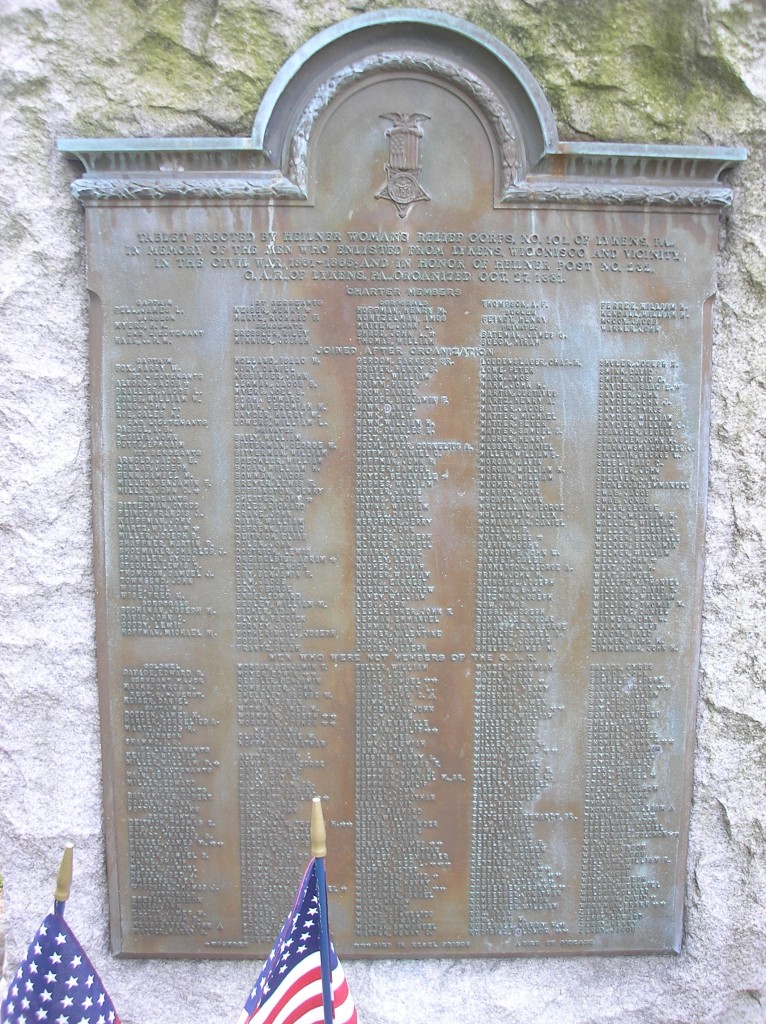
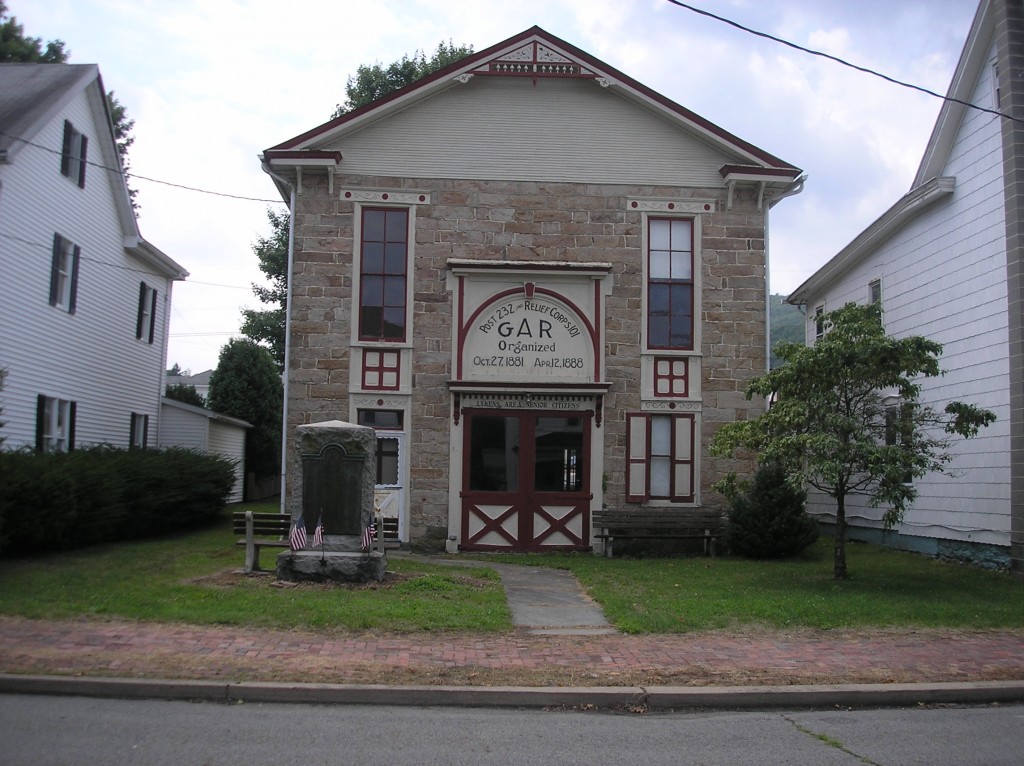
Category: Research, Resources, Stories |
4 Comments »
Tags: G.A.R., Lykens Borough, Wiconisco
 ;
;

